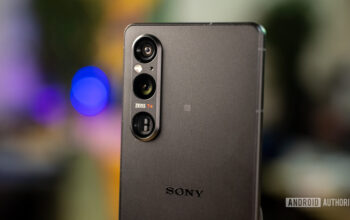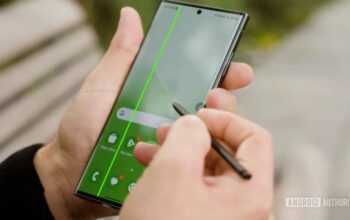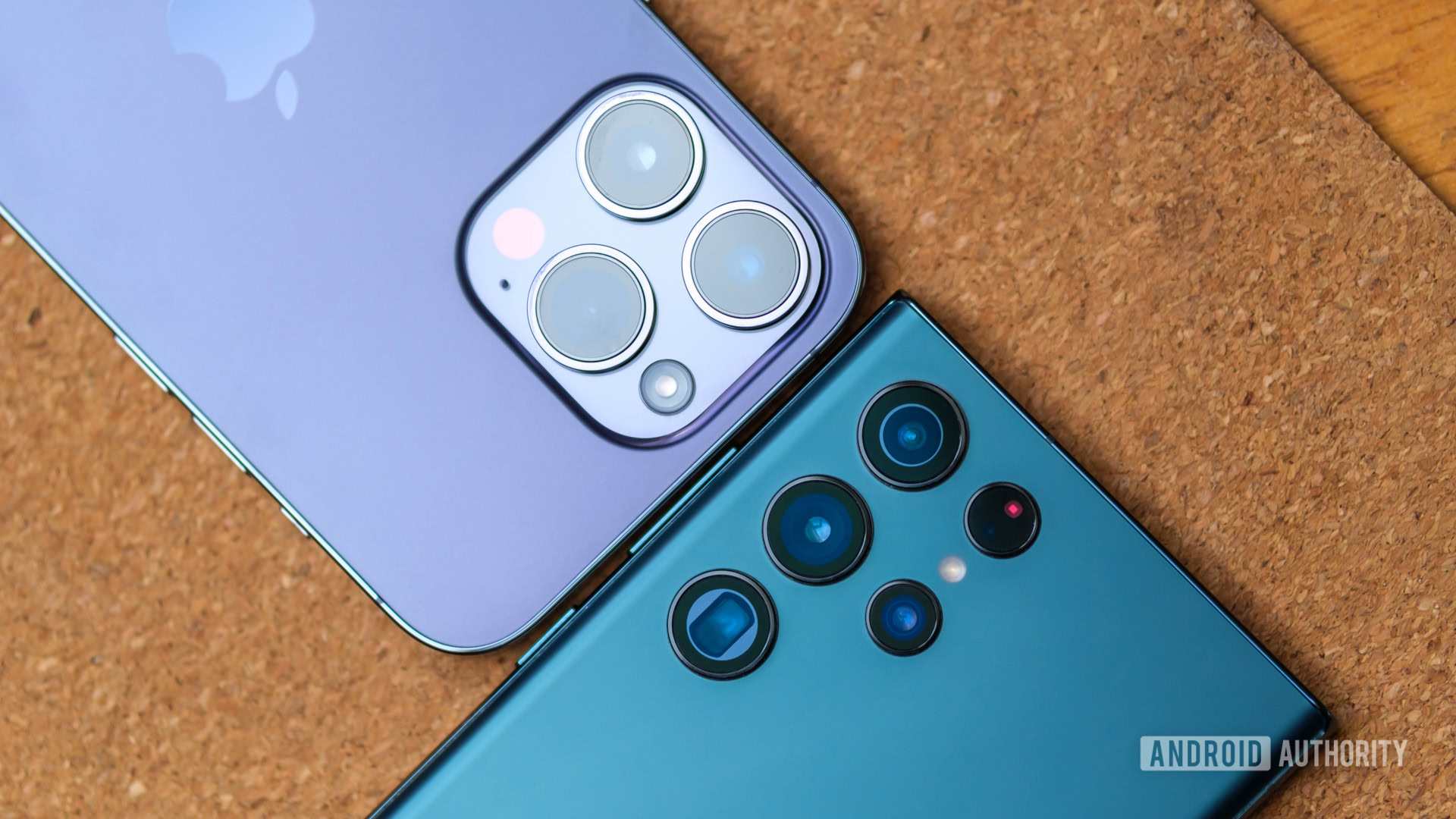
Robert Triggs / Android Authority
Apple’s iPhone and Samsung’s Galaxy lineup are two of the biggest names in the smartphone industry. Apple is clearly selling more iPhones in the US, grabbing 50% of the smartphone market share in the third quarter of 2022, compared to Samsung, which sits in second place with a 24% share of the market. But quantity doesn’t always indicate the best quality. This guide will compare the two companies along every measure, from performance and design to ecosystem and security. Ready for the ultimate showdown? Here’s how Apple’s iPhones stacks up against Samsung’s Galaxy series.
iPhone vs Samsung: Product lineup
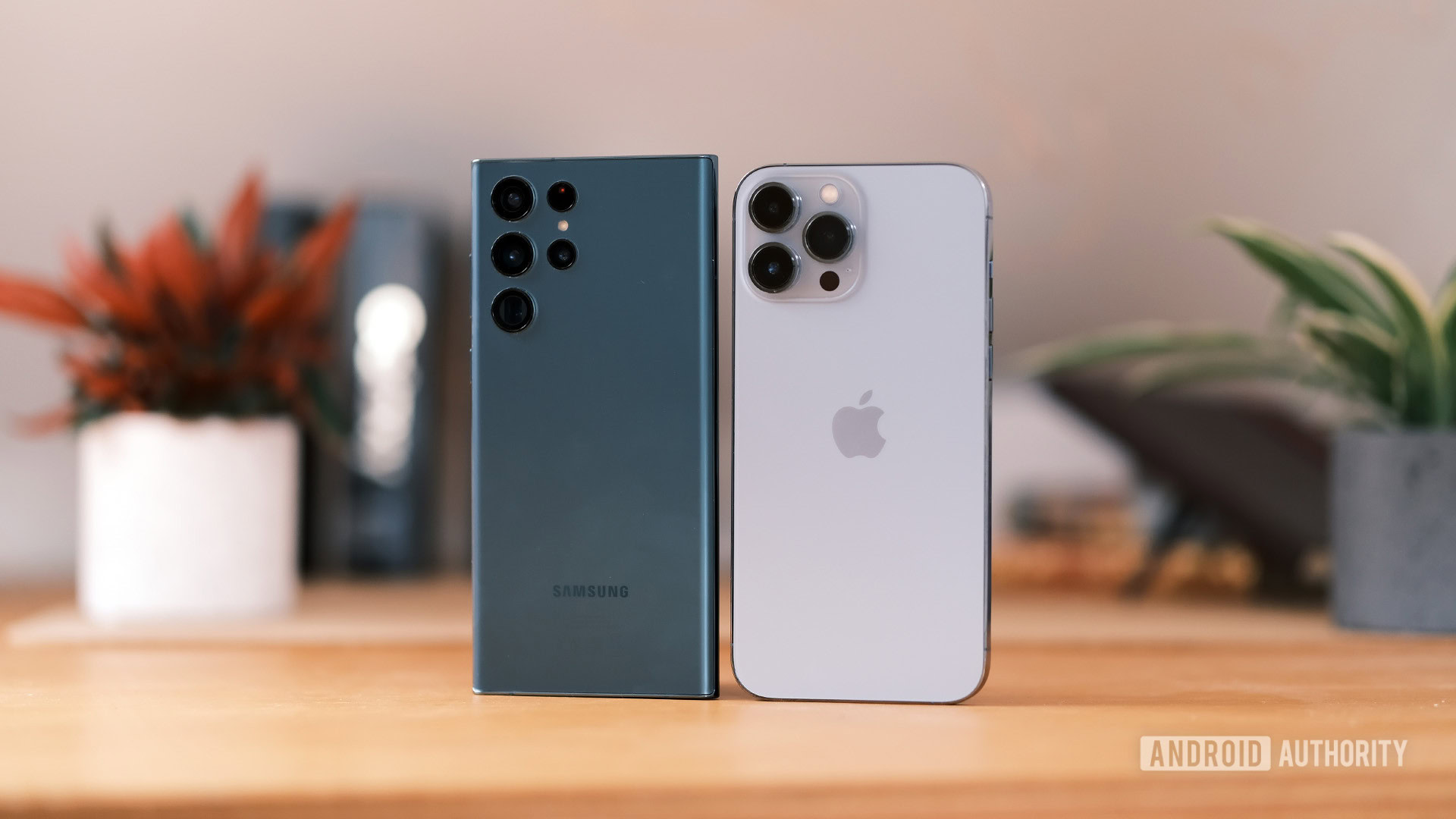
Robert Triggs / Android Authority
Both Apple and Samsung make some of the best products in the industry. Even though both companies make the same things when it comes to consumer electronics (phones, laptops, wearables, and so on), their core customer bases are quite different. This has to do with differences in design, price, compatibility, functionality, and perhaps a bit of loyalty bias towards each brand, which were here to dispel.
Samsung has a lot more phones on offer than Apple.
Samsung offers several series of phones. The Galaxy A and M series are affordable options with high-end specs for those who just want the basics. The Galaxy S series is Samsungs flagship lineup, offering some of the fastest chipsets and snappiest cameras on the market. And the Galaxy Z series brought the foldable form factor bag into fashion, but it comes at a more premium price.
The range of iPhones isn’t as wide as what you get with Samsung, as you won’t find many budget options. The iPhone SE is a scrappy mid-ranger that performs better than it looks, but other than that, you’re left with the iPhone 14 flagship series, whose models differ mainly in size and power.
We’ve broken down Apple’s and Samsung’s lineup of phones into three categories: entry-level, mid-range, and high-end, to compare their product offerings at every end of the price range. Of course, there are always great phone deals that will change the bang-for-your-buck value, but we’ll be going by the standard retail price to keep things fair.
Entry level

Ryan Haines / Android Authority
Samsung has one of the best reputations for finding a great budget phone. The Samsungs Galaxy A series offers an affordable range of phones that won’t make you feel like you’ve compromised on quality.
The Galaxy A32 5G hit the sweet spot between performance, camera quality, and value. It offers 5G connectivity for just $279, with a sleek and sturdy design that looks much more expensive. The Galaxy A13 5G also gives you a two-day battery life and is one of the few remaining new phones to feature a headphone jack and include a charger in the box for just $249. However, some carriers in the US offer the A13 5G for half the price or even for free.
Last but not least, the cheapest phone from Samsung we’d recommend is the Galaxy A03s. Sure, it’s a pretty basic phone, but for only $159, you get a beefy battery and a reliable fingerprint reader, plus two OS updates with four years of security updates.
In India, the UK, and several other European countries, Samsung sells its Galaxy M series of budget phones, offering high-capacity batteries and multi-lens camera setups. It is positioned below the more streamlined Galaxy A series, although the newer, higher-end models were derived from the A series with several alterations. For instance, many phones in this lineup house MediaTek processors.
As for Apple, you won’t find an iPhone for less than $300 unless it is a much older model (which likely entails outdated hardware and software) or bought second-hand. That’s just how it is with Apple.
Mid-range
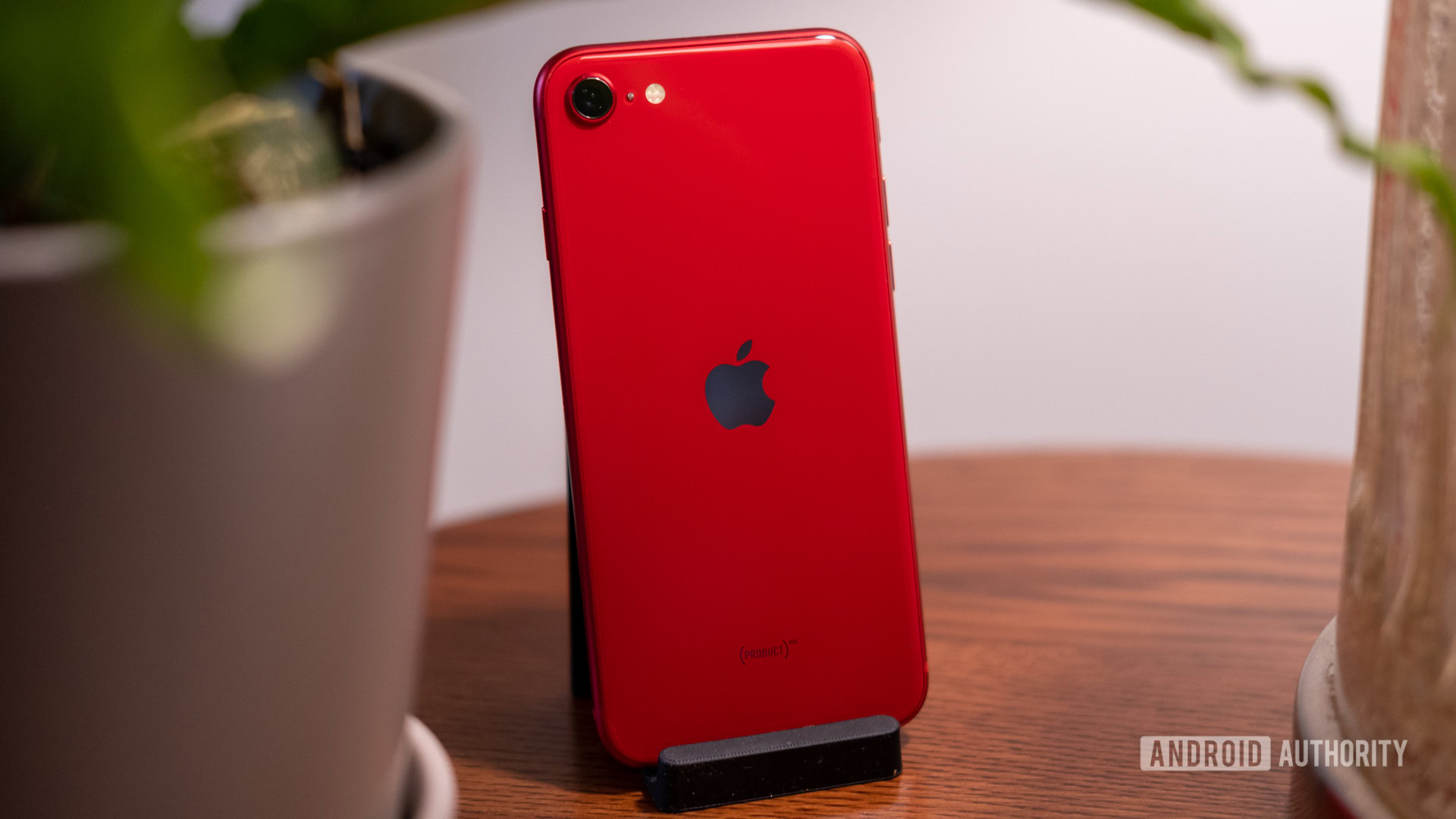
Ryan Haines / Android Authority
The Galaxy A53 5G stands out as one of the most well-rounded, mid-range phones, packing a four-camera set-up, a 120Hz AMOLED display, a 5,000Ah battery, and 128GB of storage, all for just $449. Plus, you’re getting Samsung’s unbeatable guarantee of five years of security and four years of OS updates, which means this phone will last you for years.
We haven’t gotten a “Fan edition” of Samsung’s latest S series phone yet, but you can still pick up the Galaxy S21 FE for $699. It’s basically a lite version of the vanilla Galaxy S21, meaning you get a bit less overall in terms of specs and features, but it also costs less. However, for only $100 more, you can get the compact Galaxy S22 with a better chipset, camera rig, RAM, and the same out-of-the-box Android 12.
The cheapest iPhone on offer is the iPhone SE for $429. Despite sporting an old design that hasn’t changed since the iPhone 6, the inside of the SE houses Apple’s powerful A15 Bionic chip, the same found in the iPhone 13 series and the iPhone 14/14 Plus. The only things that hold back the affordable iPhone are its small 4.7-inch screen, singular 12MP wide-angle camera, and it doesn’t feature MagSafe, though you can still wireless charge this device.
Apple didn’t release an iPhone 14 Mini this year, so those hoping for a premium mini device will have to opt for the iPhone 13 Mini. It has the same Bionic 15 chipset, and 12MP+12MP dual rear camera systems as the iPhone 14 and 14 Plus, except its starting price dropped to $599, making the 13 Mini a more attractive proposition.
High-end

Zarif Ali / Android Authority
Now we’re getting into the premium territory where phones will break into the four-digit price range. The best Samsung phone for most people is the Galaxy S22 Plus. Between a processor that can power through anything, a full-days battery, a triple-camera set-up, and a crisp 120Hz display, this is truly one of the best phones you can get for under $1000.
If you want the best for the best, the Galaxy S22 Ultra is a power user’s dream. With a dazzling 6.8-inch AMOLED display, it’s a big phone, for sure. But you won’t find better cameras on any other Samsung phone, or even perhaps in the phone market. Of course, it’s one of the most expensive phones at $1,199, but also one of the only ones to come with an integrated S Pen.
Samsung’s Galaxy S23 series of phones are just around the corner, and we are expecting some significant upgrades in specs for the S23 Ultra.
iPhone 14 Pro and Pro Max are Apple’s current top offerings. The iPhone 14 Pro offers plenty of bang for your buck with an upgraded processor, a sharper primary camera, and a reimagined display. However, it’s the same price as the S22 Plus but comes with a smaller battery, fewer cameras, and slower charging. The iPhone 14 Pro Max delivers a larger display and improved battery life but also costs more.
Besides your traditional flat phones, Samsung offers some high-end foldable for those who want something different. The Galaxy Z Flip 4 brings a classic clamshell design to the modern age, packs plenty of power, a solid primary camera, and more for $999. If you want to fold horizontally, the Galaxy Z Fold 4 is the best tablet replacement thanks to its large internal display compatible with the S Pen. However, the Fold 4 is the most expensive phone in Samsung’s lineup at $1,799.
Everything else
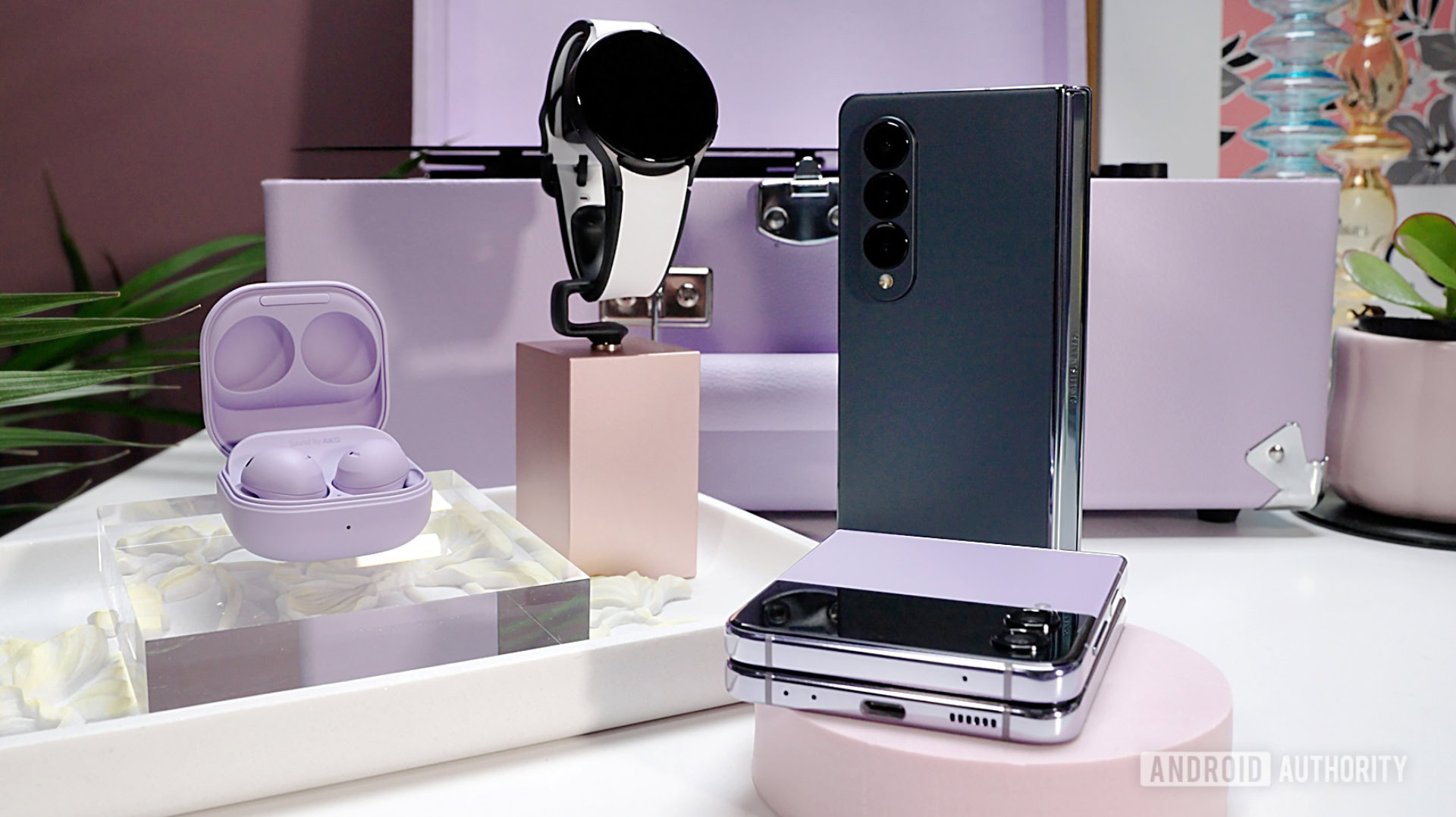
Ryan McLeod / Android Authority
If you weren’t aware, Apple and Samsung make more than just phones! Both companies have a growing portfolio of products, including laptops, earbuds, wearables, tablets, smart home devices, and more. Apple Macbooks have led the charge in delivering light and slim laptops for years, but Samsung has followed their lead with the Galaxy Book series. Samsung has also followed suit in designing better integration between devices, and their products work just as well with each other as Apple’s.
To make the most of the AirPods or Apple Watch, you’ll need an iPhone to gain access to all the relevant features. Likewise, to make the most of your Galaxy Buds or Galaxy Watch, you’ll need a Samsung phone. Most of your peripherals and accessories will therefore depend on which phone you choose to go with, and on that front, you can’t really go wrong either way.
One of the more major differences, which may be a deciding factor based on how much tech you’ve already accumulated, is that all the latest Samsung devices use USB-C ports. With iPhones, you are limited to using Apple products to connect with its proprietary lightning port.
iPhone vs Samsung: Hardware and tech
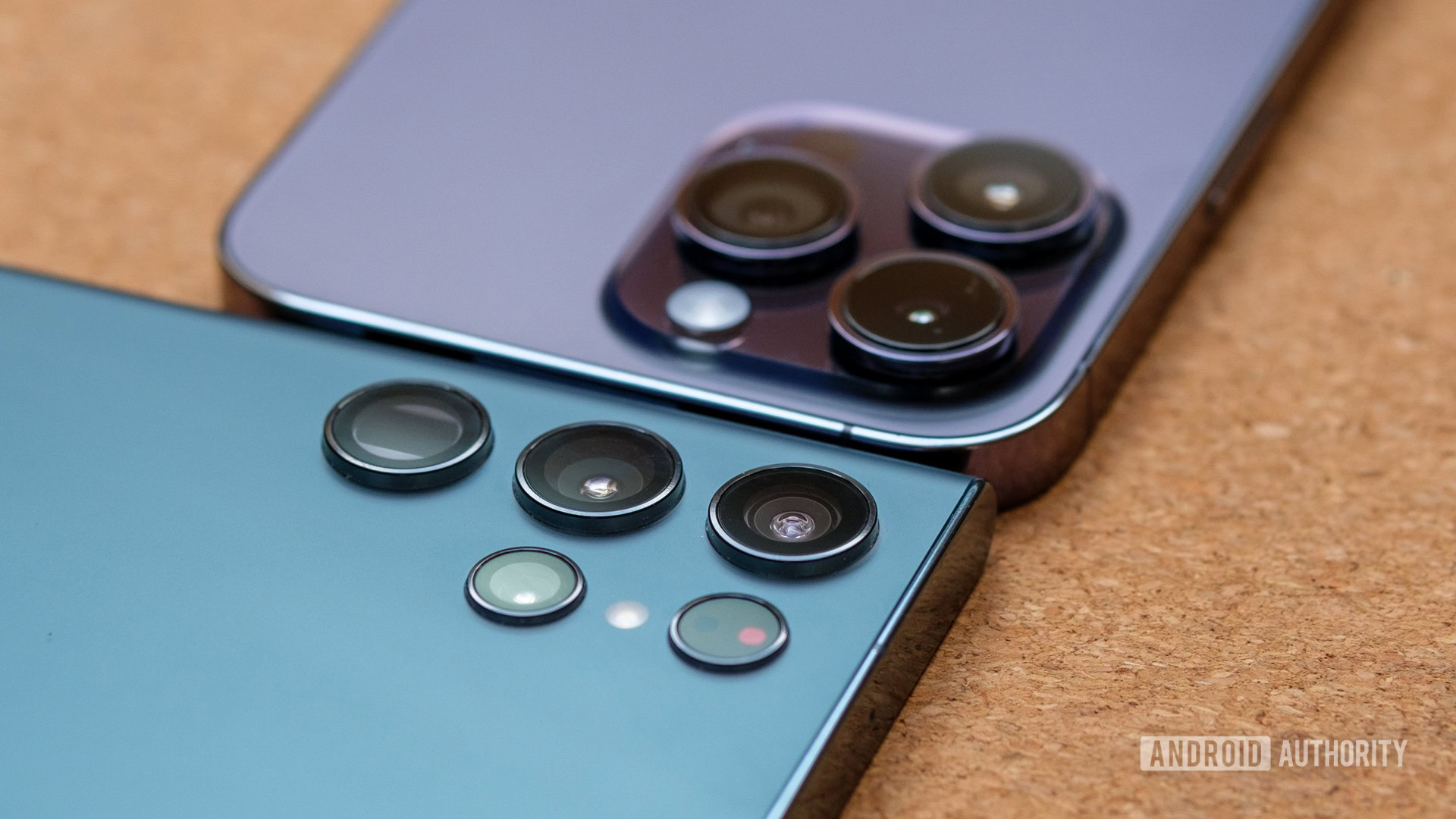
Robert Triggs / Android Authority
Depending on what you look for in a phone, this section can be the real meat and potatoes to deciding which is best for you. Here are some quick comparisons of Apple and Samsung phones’ important hardware and tech.
Chips
Samsung has used Snapdragon chipsets for its phones sold in the United States, India, South Korea, and a few other countries while using Exynos chips for the rest of the world. Inside all three of the latest Galaxy S22 smartphones, you’ll find either the Snapdragon 8 Gen 1 or the Exynos 2200 chipsets. According to our benchmark comparison, the Snapdragon 8 Gen 1 was the better of the two. Still, realistically, the Exynos 1280 in the entry-level Galaxy A53 has enough power under the hood for the average user, even if it doesn’t compete with the iPhone.
Our testing showed that the iPhone 13’s A15 Bionic chipset beat the Qualcomm Snapdragon 8 Gen 1 and Samsung Exynos 2200 regarding CPU performance. This advantage extended to both single-core and multi-core CPU tests in Geekbench 5. Although, our testing also showed that the Snapdragon 8 Gen 1 is superior to the A15 in terms of GPU performance. The Snapdragon-powered Galaxy S22 Ultra delivered better results in 3DMark and GFXBench.
As for the latest A16 Bionic found in the iPhone 14 Pro and Pro Max, it does appear to beat out Qualcomm’s latest Snapdragon 8 Gen 2, likely to be found in Samsung’s upcoming S23 lineup, at least in terms of CPU. But again, GPU is a different story. Our current benchmarks of the Snapdragon Gen 2 eclipse Apple’s latest iPhone, marking a significant achievement for gaming potential. However, whether this performance can be sustained in retail handsets remains to be seen.
The takeaway here is that is iPhone tends to offer better CPU performance, whereas Samsung tends to offer better GPU performance. So, if you’re going to be playing lots of high-resolution mobile games, for example, go with Samsung. But, if you want to switch between a wide range of applications quickly, an iPhone may be better — although the overall speed between high-end devices is negligible. If you don’t really care about either of those and just want something cheap and less powerful, Samsung has plenty of budget options that Apple does not.
Camera
For many people, cameras are becoming a deciding factor when choosing a phone. They are, after all, the primary method for capturing and sharing our day-to-day experiences. The majority of Samsung phones have versatile cameras, with budget options having at least three cameras, including a primary, macro, and ultrawide shooter. With iPhone, if you want more than just one 12MP camera, you’ll have to buck up for the flagship series, which maxes out at three.
In terms of sheer power, there is one clear winner in the camera department: Samsung’s S22 Ultra. Its megapixel might on both the front and back, combined with in-depth control, was enough for us to declare it the best phone camera available. It has a quad-camera system including a stellar 108MP shooter, joined by a 10MP periscope camera, a 10MP telephoto lens, and a 12MP ultrawide lens.
That being the case, Apple’s latest high-end model, the iPhone 14 Pro Max, is an admirable runner-up. It was the first iOS device to finally break free of the 12MP trio, swapping one out for a new 48MP sensor. Apple also claims a 6x optical zoom range, though it’s using the 0.5x ultrawide and 3x optical telephoto to get there.
The front camera placement is also starkly different on both sets of phones. The Samsung Galaxy S22 gets a punch-hole, center-aligned 40 MP selfie shooter. On the other hand, Apple continued the aging notch design with the iPhone 14 series, featuring another 12MP lens as part of the 14 Pro’s Dynamic Island setup. If selfies are all you’re worried about, both are solid, so it mainly depends if you prefer a notch or a punch-hole to look at.
Apple is supposedly working with Sony to implement a “state-of-the-art” camera into its iPhone 15 lineup. Still, we must wait to see if it can compete with the whopping 200MP rear shooter we expect to see on the Galaxy S23 Ultra.
Display
As for the screen you’ll be looking at, both Apple’s and Samsung’s flagship series of phones have HDR displays with similar peak brightness values. Apple uses an XRD OLED display, whereas Samsung adds an extra layer of TFTs with its AMOLED display. Even the cheaper Galaxy A53 gets an AMOLED display, whereas Apple’s more affordable iPhone SE takes a step back with an LCD display. When it comes to sizes, you get more options with Samsung since it offers a lot more phones at different price points.
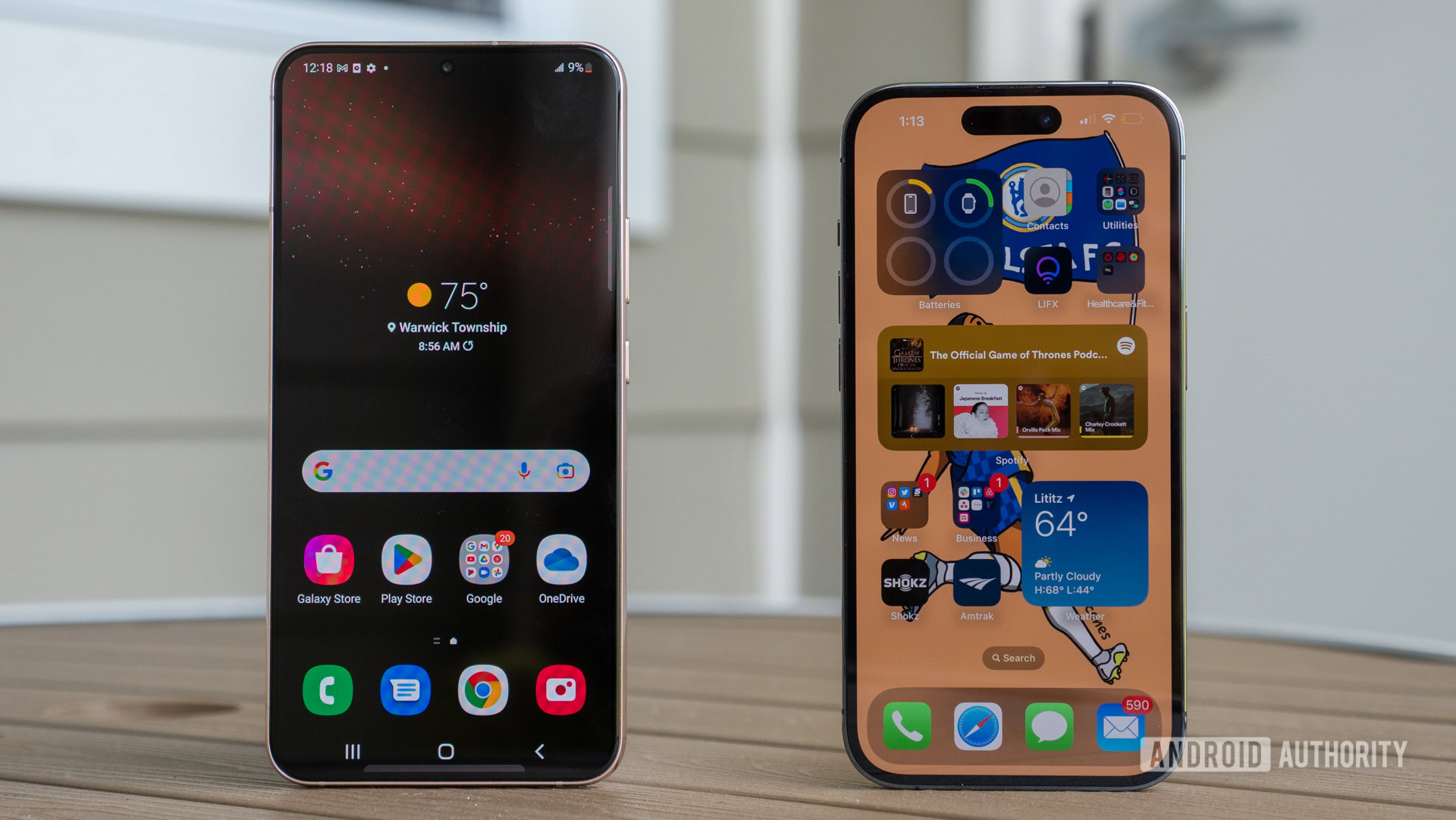
Ryan Haines / Android Authority
Galaxy S22 Plus (left), iPhone 14 Pro (right)
Samsung usually uses Gorilla Glass protection for most of its phones. The strength of which usually goes up with the price tag of the device, with the strongest being Victus. Apple has used Ceramic Shield for their phones since the iPhone 12 series, a new type of glass developed by Corning, the same designers behind Gorilla Glass. Every iPhone gets the same Ceramic Shield protection, regardless of price.
But perhaps the biggest difference between the two companies regarding screen specs is Samsung’s commitment to outdo Apple’s devices with much faster refresh rate panels. Just like their predecessors in the iPhone 13 series, the iPhone 14 and iPhone 14 Plus have 60Hz displays. In contrast, even mid-range options like the Galaxy A53 5G get a smooth and snappy 120Hz display, as does the entire Galaxy S22 series. If you want that on the latest iPhone, you’ll have to consider spending a lot more to get one of the iPhone 14 Pro models.
Apple’s trend of reserving the highest refresh rates for their premium flagships is longstanding and likely to continue. With Samsung, the entire lineup’s display usually consists of the same speeds. It’s just one of those things where if you have experienced 120Hz, it’s hard not to notice a difference in speed with anything less.
Battery
How do the battery life and charging speeds compare between Apple’s iPhone and Samsung Galaxy series? Well, iPhone batteries were smaller and slower to charge across the board for the latest flagship lineups. The vanilla iPhone 14 had a 3,279mAh battery, lasting up to 20 hours during video playback. Limited to 20W charging via the lighting port, it took around half an hour to get a depleted battery to 50% in our testing and was noticeably slower with the 7.5W wireless Qi charging.
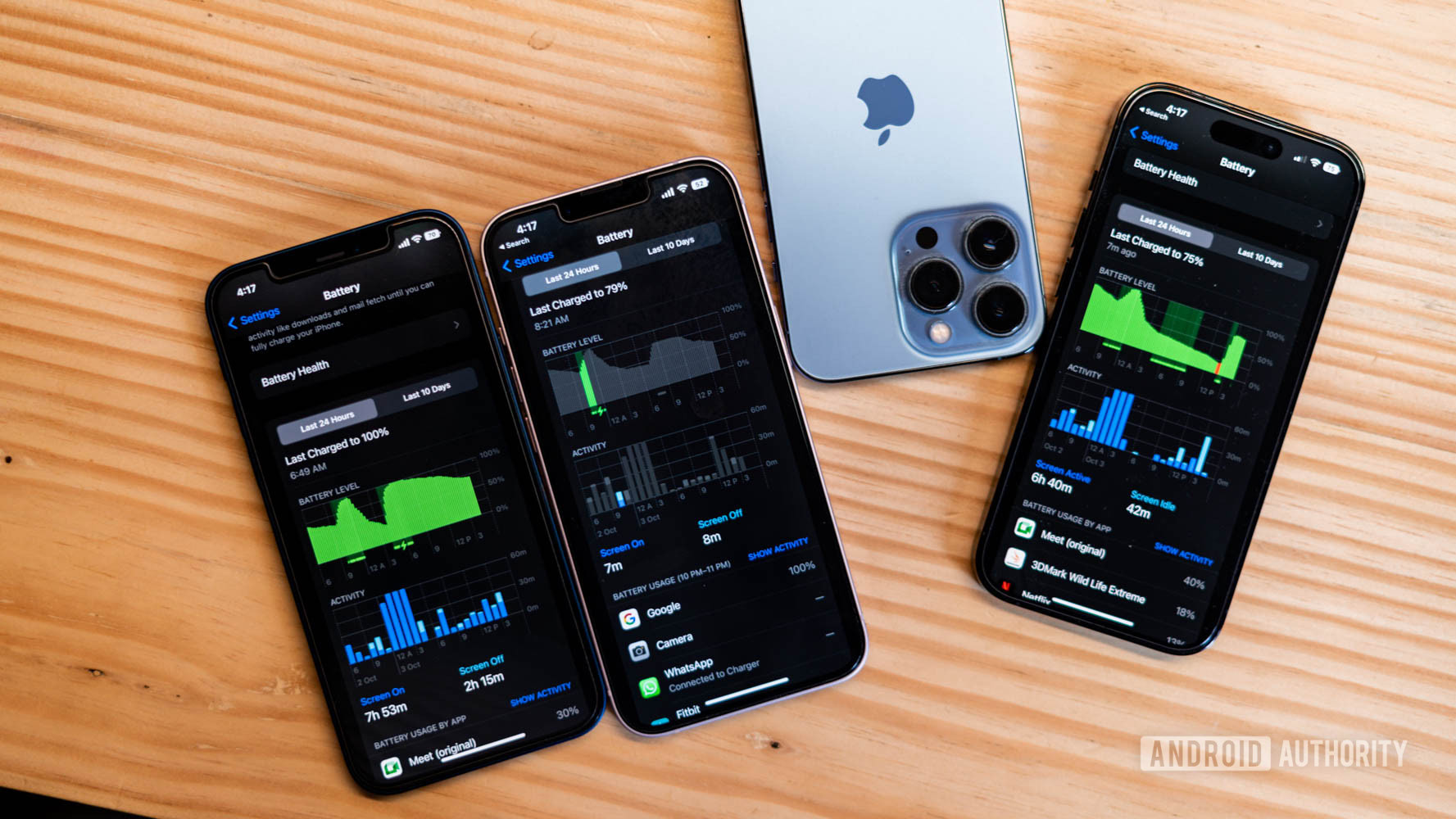
Dhruv Bhutani / Android Authority
The comparable Galaxy S22 had a 3,700mAh bank with 15W wired charging and 15W wireless charging, which was slightly downgraded from the S21 flagship and didn’t perform as well under heavy usage in our testing. However, the S22 Plus’s 4,500Ah unit offered the best battery life and charging speeds from Samsungs entire lineup, even more so than the S22 Ultra. Our testing showed the S22 Plus could typically be topped up from 0% to 100% in just over 50 minutes and easily reached the 50% mark in under 25 minutes.
See also: Samsung S22 vs iPhone 14
The disparities were even bigger for the premium flagships. Compared to the S22 Ultra 5,000mAh battery with 45W fast charging, the iPhone 14 Pro only boasted a 3,200mAh battery with only 27W wired charging. This meant the S22 Ultra could easily sustain constant usage with anywhere between 25%-35% left in the tank at the end of the day, with the same recharge times as the S22 Plus. On the other hand, we found it almost impossible to finish a day with more than 20% remaining battery using the iPhone 14 Pro, and took roughly 80 minutes to complete a full charge — around half an hour more than the Galaxy S22 Plus.
Overall, you tend to get better batteries and charging speeds with a Samsung Galaxy than with an iPhone. If you’re on a tight budget and just need something that will last long on a single charge, you can get a beefy 5,000Ah battery with Samsung’s Galaxy A53 5G and Galaxy A13 5G. The cheapest iPhone SE has less than half that at 2,000mAh.
iPhone vs Samsung: Software and ecosystem
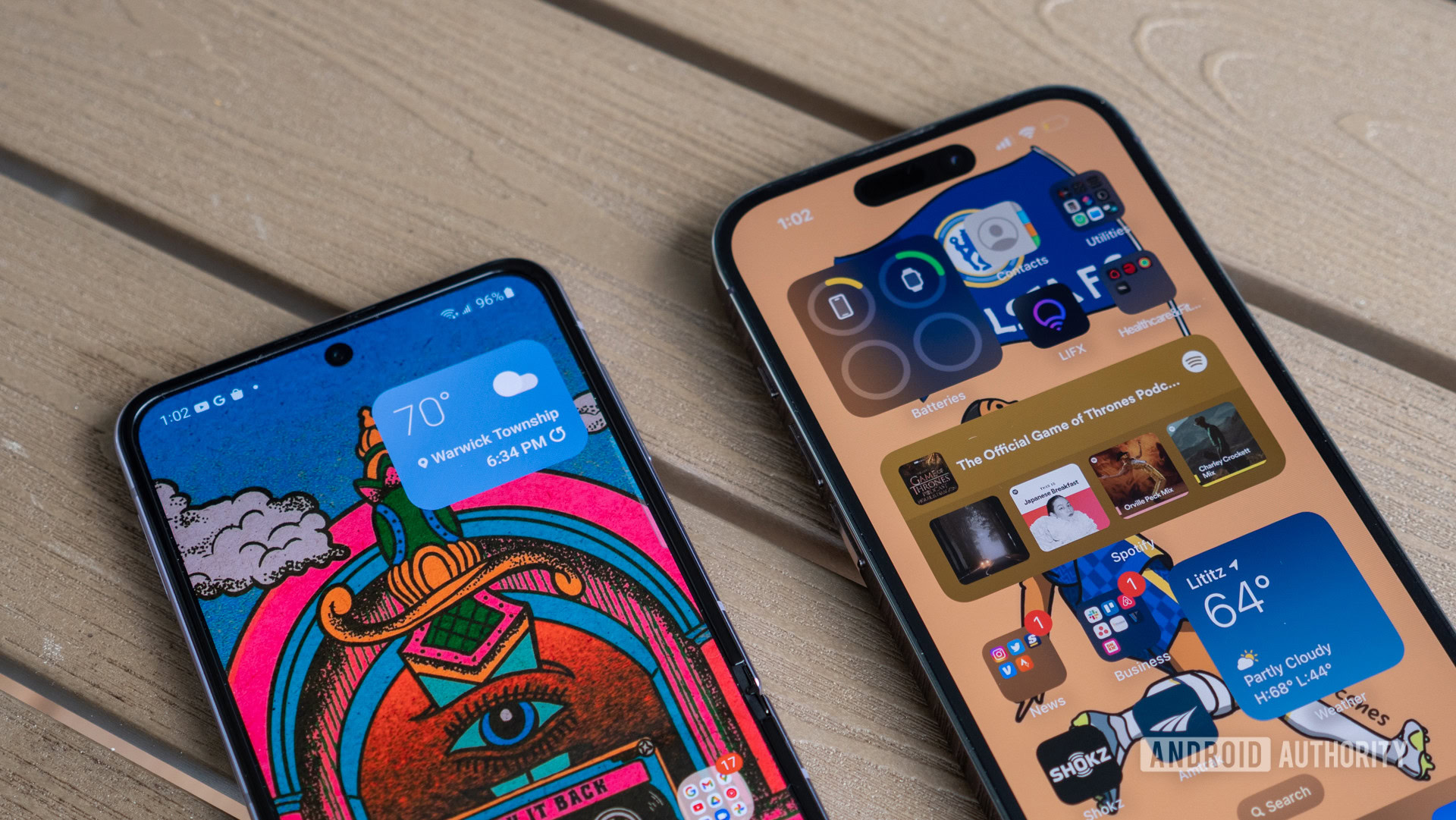
Ryan Haines / Android Authority
Here at Android Authority, we can’t help but be a little biased toward Google’s operating system. Android is an open platform offering more choice, versatility, and customization, to name a few pros. However, Samsungs One UI does add a lot of bloatware on top of stock Android, making it easy to get lost in all the icon placements, endless settings, and pre-installed apps you likely won’t ever use. But, on the flip side, it does enable even more customizability with exclusive apps such as GoodLock. Check out our weekly winners for #aahomescreens on Twitter if you want to see some examples.
But there are a few things that even we admit iOS does better. For starters, iOS tends to be a simpler and smoother experience. This is partly due to Apple’s Bionic chip with a faster CPU, but the user interface itself is an example of the saying “less is more.” There are no app drawers to hide things, and the simpler controls are more intuitive.
Samsung tends to offer four OS updates and five years of security updates, while Apple averages six OS updates per year.
Regarding software support, Samsung offers up to four OS updates and five years of security updates for their flagships, including the Galaxy S series, Z series, and select A series devices. Samsung was true to its “up to” wording this past year, fully delivering on its promise. Past devices, such as the Galaxy S20 and Note Series, have received three years of OS updates and four years of security updates.
However, the gold standard of software updates is still held by Apple, offering offers up to six OS updates on average. iPhone users can also download them as soon as they launch, whereas Samsung has to wait to get the update from Google, work on it, optimize it for your device, and then send it out to its users, which can take a few months.
Because iOS is Apple’s proprietary software, it also gives them more control over the end-user experience. This allows for better RAM management, smoother software integration, and user security. However, the downside is that this puts users within Apple’s so-called walled garden, unlike Android’s open-source model. That means if you’re using an iPhone, you only get apps available from the one and only App Store, whereas Samsung phones can side-load apps or install them from alternative third-party stores.
iOS is simpler and smoother to use, but the complexity of One UI allows for much more customization.
Most apps are available on either operating system, but more Android apps are generally available than iOS apps. Of course, some apps are exclusive to iOS and others to Android. For example, if all your friends use iMessage, you will have to have an iPhone to make the most of its features, lest you appear as a green SMS bubble on their phones.
In terms of an ecosystem, it used to be that Apple blew all other competitors away with features like AirPlay and AirDrop. But Samsung and Google are quickly catching up with equivalent features such as Nearby Share. The ecosystems now look closer to being tied with Samsung’s burgeoning portfolio of products. Samsung has also improved upon SmartThings and is working with Matter for quicker smart home setups to rival Apple’s HomeKit.
iPhone vs Samsung: Value for money
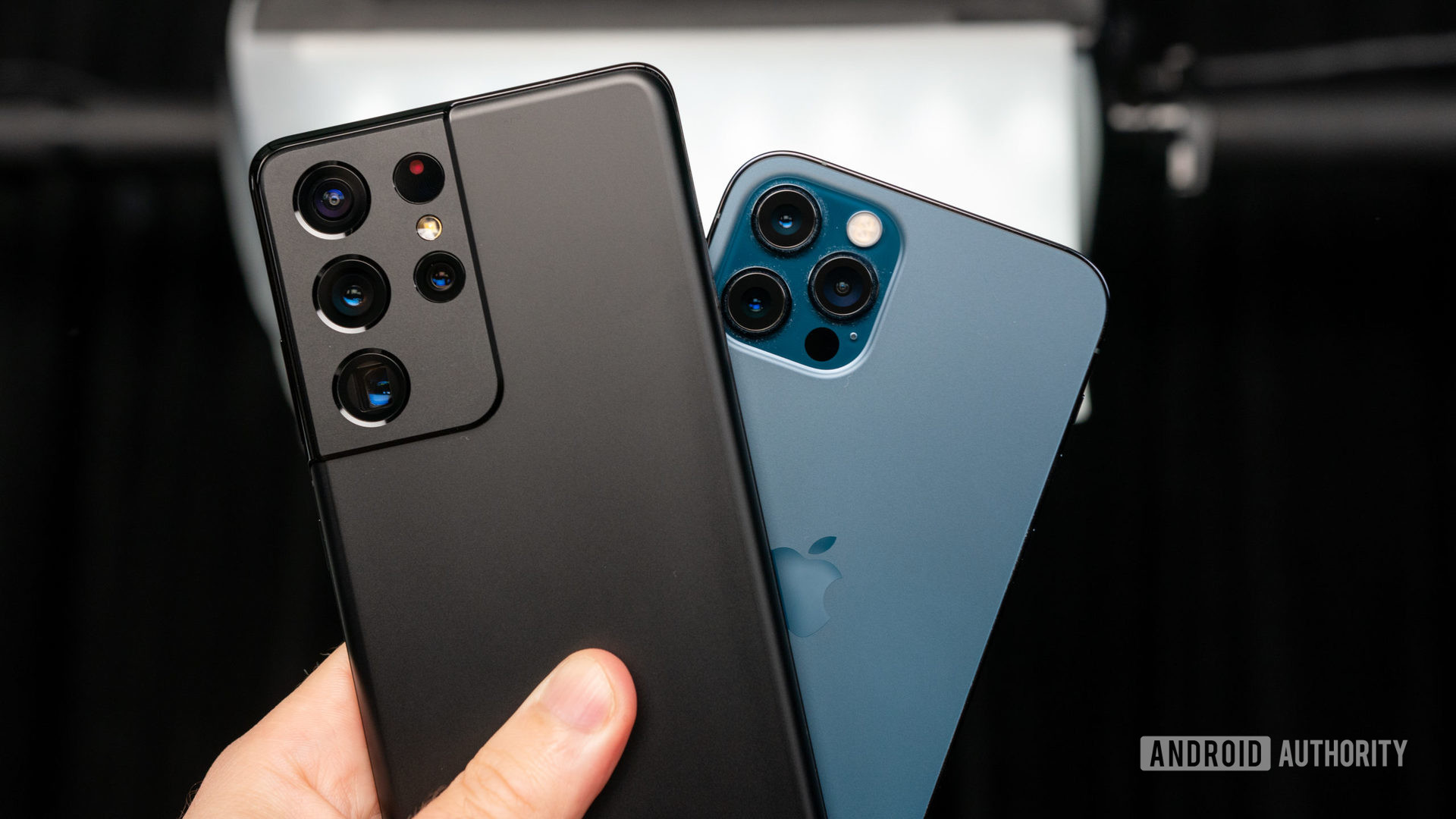
Adam Molina / Android Authority
Ultimately, the value you get from a phone depends on what you are looking for and how you want to use it. For the most part, the iPhone 14 lineup and the Galaxy S22 lineup were around the same price. The vanilla models were both $799, and the S22 Ultra was $100 more than the iPhone 14 Pro Max. As we saw in the hardware and tech section, the better bang for your buck on the base models would have been the S22, and the higher price tag on the S22 Ultra is reasonably justified, given the better specs. Samsung’s wider selection of smartphones also means you can expect to find a good deal no matter your budget.
You’ll generally get better hardware and specs for the price with Samsung, but the phones can depreciate in value faster than an iPhone.
That being said, Android phones tend to depreciate faster than iPhones. Samsung actually keeps its value better than others in its class, but still not as much as Apple. This means you typically get a higher trade-in value for an iPhone when it’s time to upgrade devices. Plus, you can usually sell them for more and faster, given how popular Apple products are.
On the other hand, iPhones are more expensive to repair than Samsung phones. Apple stores are notorious for charging high fees, primarily because Apple has only the tools capable of opening and fixing iPhones. And their recently launched self-repair service was far from ideal for many iPhone users. That’s bad news if you tend to drop your phone a lot. Conversely, you can typically take Samsung phones to any trusted technician to repair, and their latest iFixit program looks like a promising, efficient repair solution.
iPhone vs Samsung: Data security and privacy
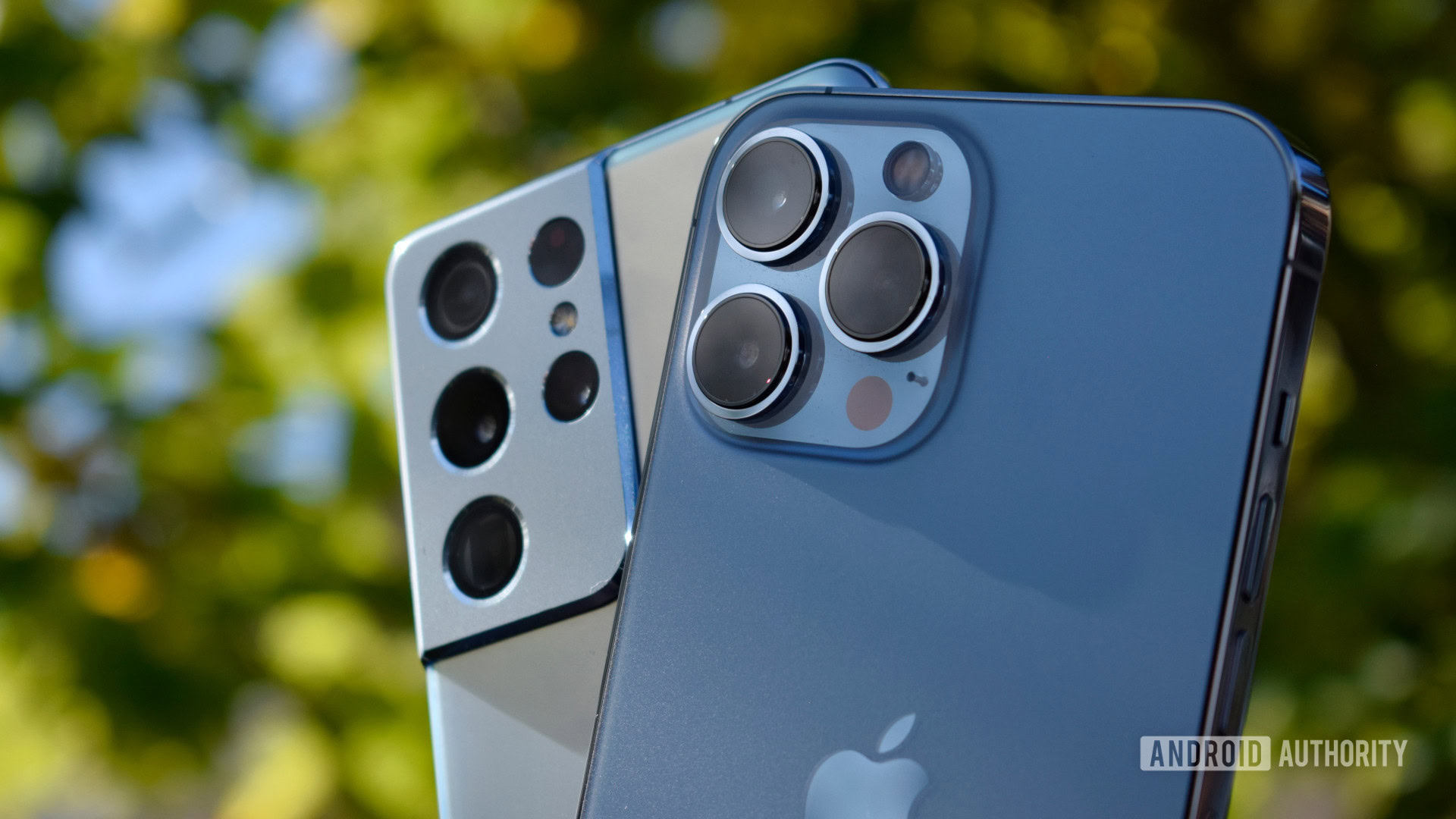
Robert Triggs / Android Authority
Thanks to Google’s security updates becoming more consistent, this topic isn’t as one-sided as it once was. Google has continued to secure the Google Play Store and add measures to ensure the information on your phone stays safe. These include sandboxing, two-step verification, Google Play Protect, further controlled app permissions, and more. These upgrades, along with more educated users, make for robust Android security that begins to rival iOS. We have a guide on protecting your privacy on Android, so give it a read to stay in the know.
Whether iOS is better than Android in security is now up for debate, but the consensus still gives Apple the upper hand. iOS has more consistent updates for all devices, a closed ecosystem that is harder to penetrate, and a stricter app store. These factors combined make it harder for attackers to target iOS users.
iPhone vs Samsung: Who wins?
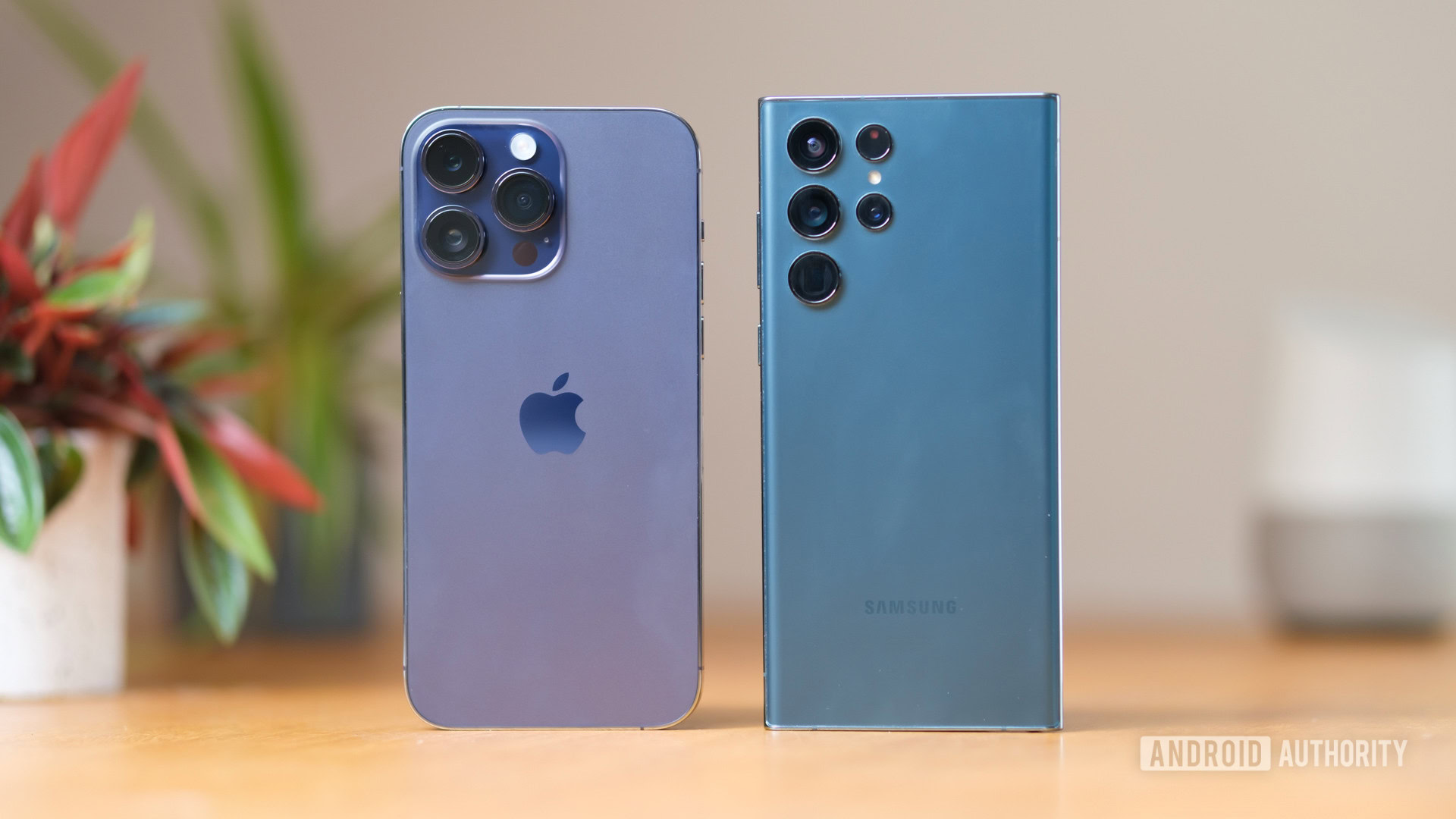
Robert Triggs / Android Authority
So which brand comes out on top in our ultimate showdown? If you were expecting this article to settle the iOS vs Android debate forever, we’re sorry to disappoint. Every year this question is asked, and the answer largely remains the same — it depends. Apple’s iPhone and Samsung’s Galaxy are some of the best phones in the business, but which is the “best” depends on what you want to use the phone for, which ecosystem you want to be a part of, and which operating system you prefer.
By highlighting all the pros and cons of both Apple’s iPhone and Samsung’s Galaxy, we hope you have enough information to determine which side will better suit your needs. For the most part, Samsung Galaxy phones have better hardware, cameras, battery life, and display for the price than the iPhone offers. But despite the tech in your hand being of better quality, a Samsung phone may depreciate in value faster than an iPhone. As ironic as that may sound, the popularity of the iPhone plays a big part in the market.
Samsung phones have better cameras, battery life, and display for the price, but iPhones have better software support, security, and a proven ecosystem.
iPhones also tend to offer better security, more frequent updates, and a more integrated ecosystem, though Samsung is quickly catching up. Of course, that all comes at the cost of staying within Apple’s proprietary system. If you want to customize your phone to look exactly as you want and have options where you shop for apps, then Samsung is the way to go. Additionally, if you’re shopping on a budget, Samsung has some great mid to low-range options, whereas most iPhones will cost you a pretty penny, even past years’ models.
If that wasn’t enough factors to consider, don’t forget about Google’s lineup of Pixel phones, of which the Pixel 7 Pro won both our Readers and Editors Choice awards for 2022. Just some food for thought as a third option if neither the Samsung Galaxy nor the Apple iPhone convinced you to buy one.
FAQs
iPhones made up 50% of the US smartphone market in the third quarter of 2022, with Samsung phones winning second place with a market share of 24%. Looking at 2022 as a whole, Canalys reported that Samsung was the number one brand with a 22% market share. Apple, on the other hand, was in second place, grabbing 19% of the market.
Apple’s iPhone and Samsungs’s Galaxy have different strengths and weaknesses, so which one is better depends on your needs. Samsung phones tend to have better cameras, battery life, and display quality, even on budget models. However, iPhones do offer better software support and data security.
Yes, Samsung has brick-and-mortar stores just like Apple, though there are fewer globally. You can find your nearest Samsung store here.

